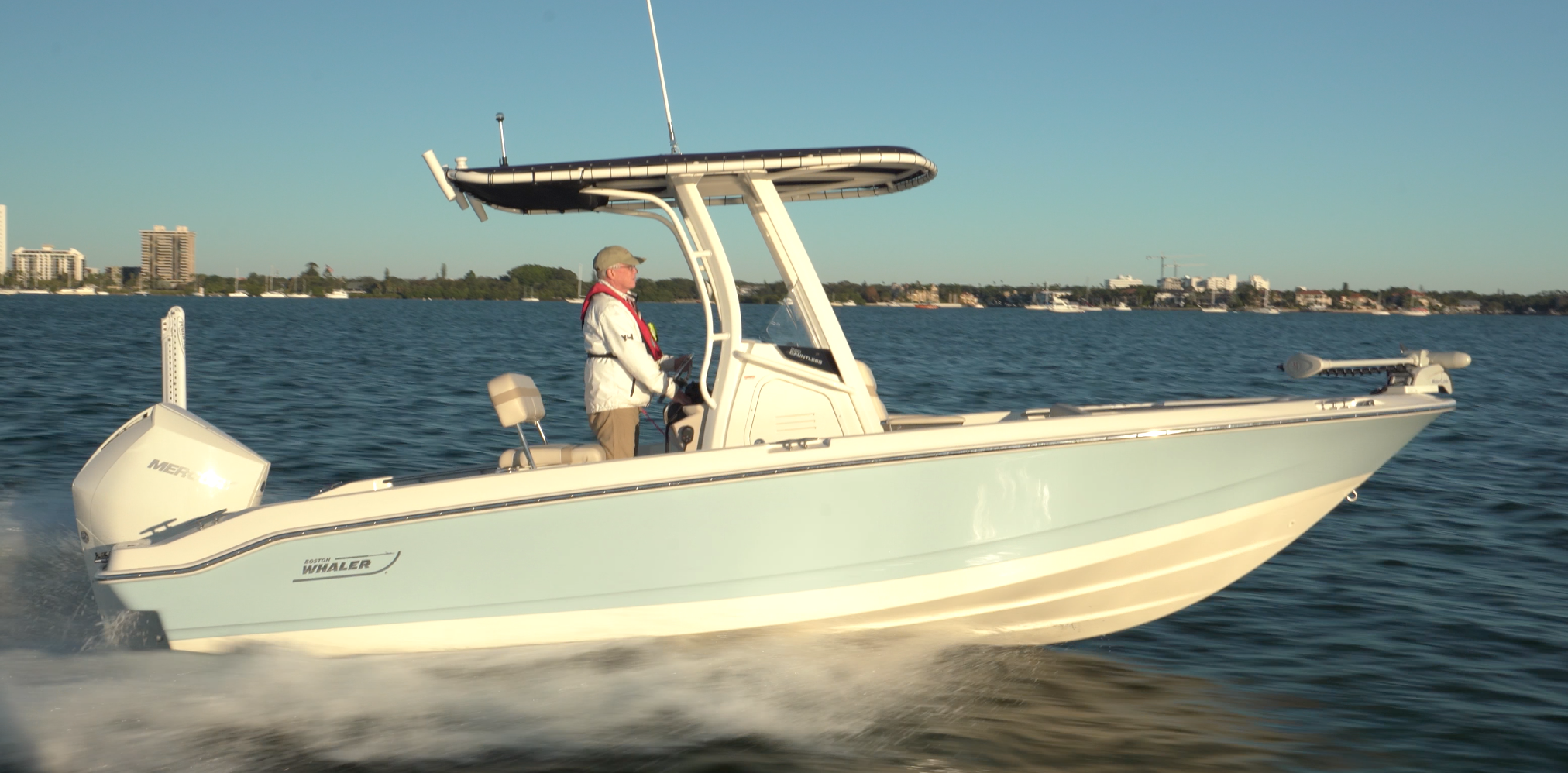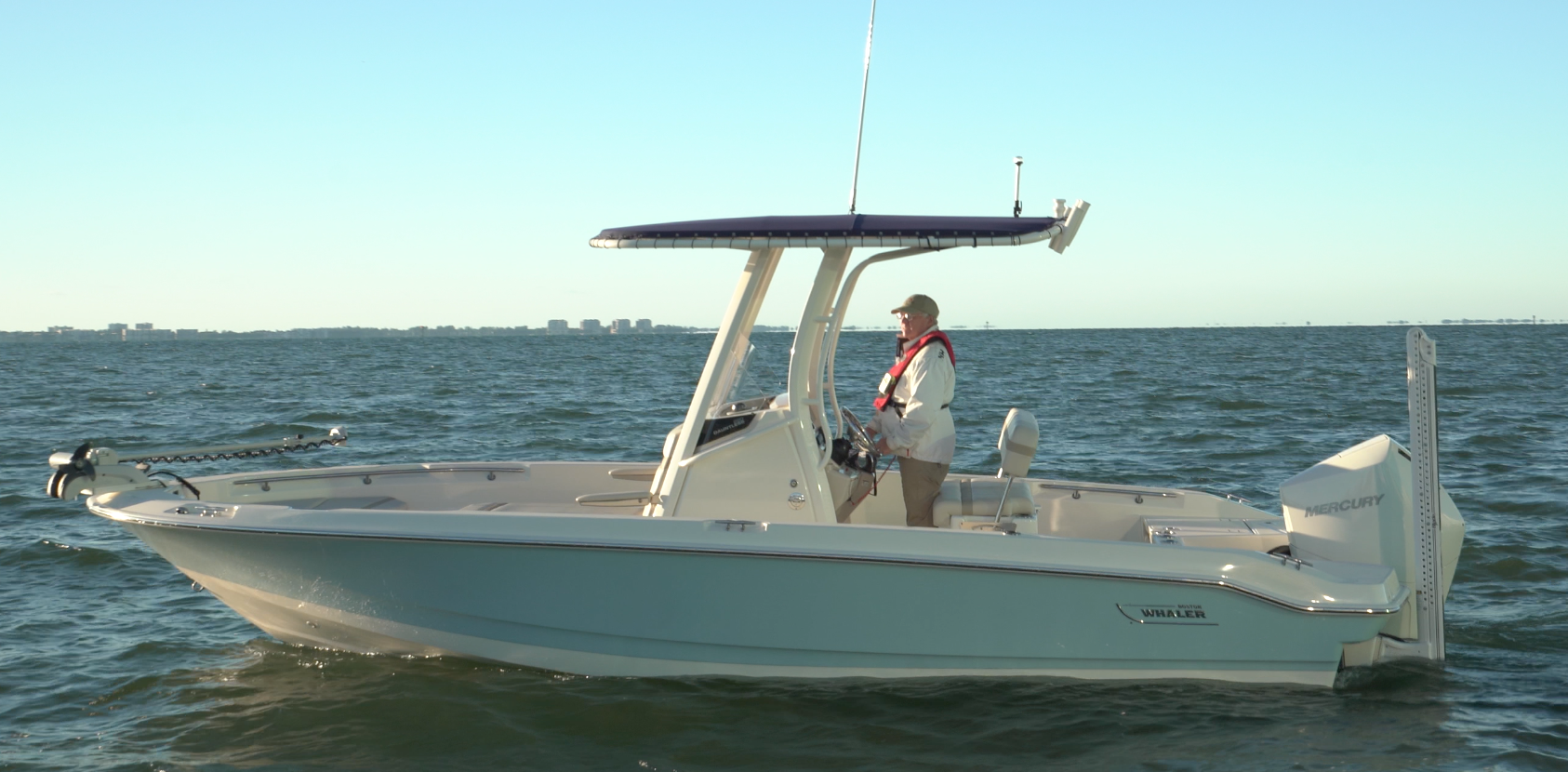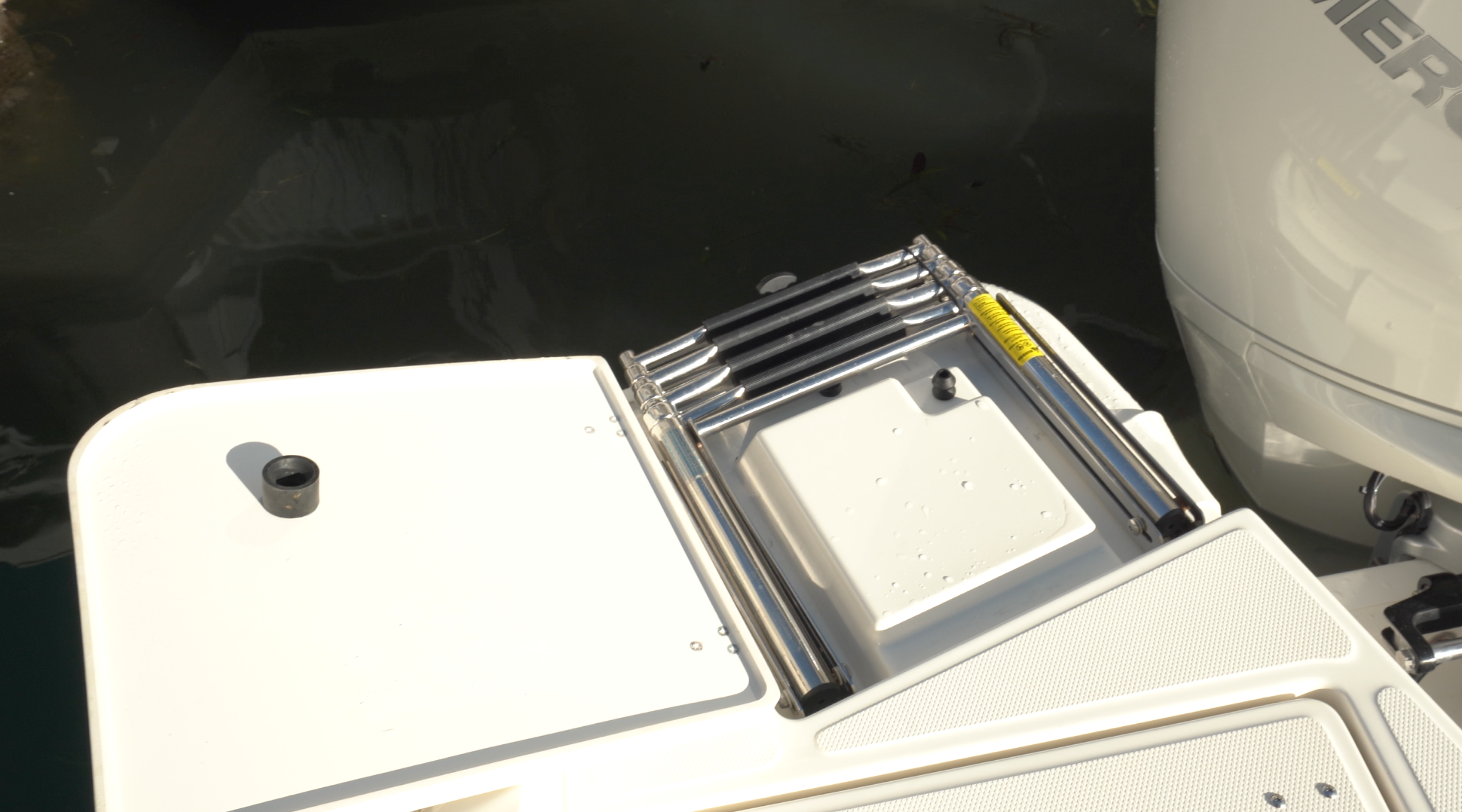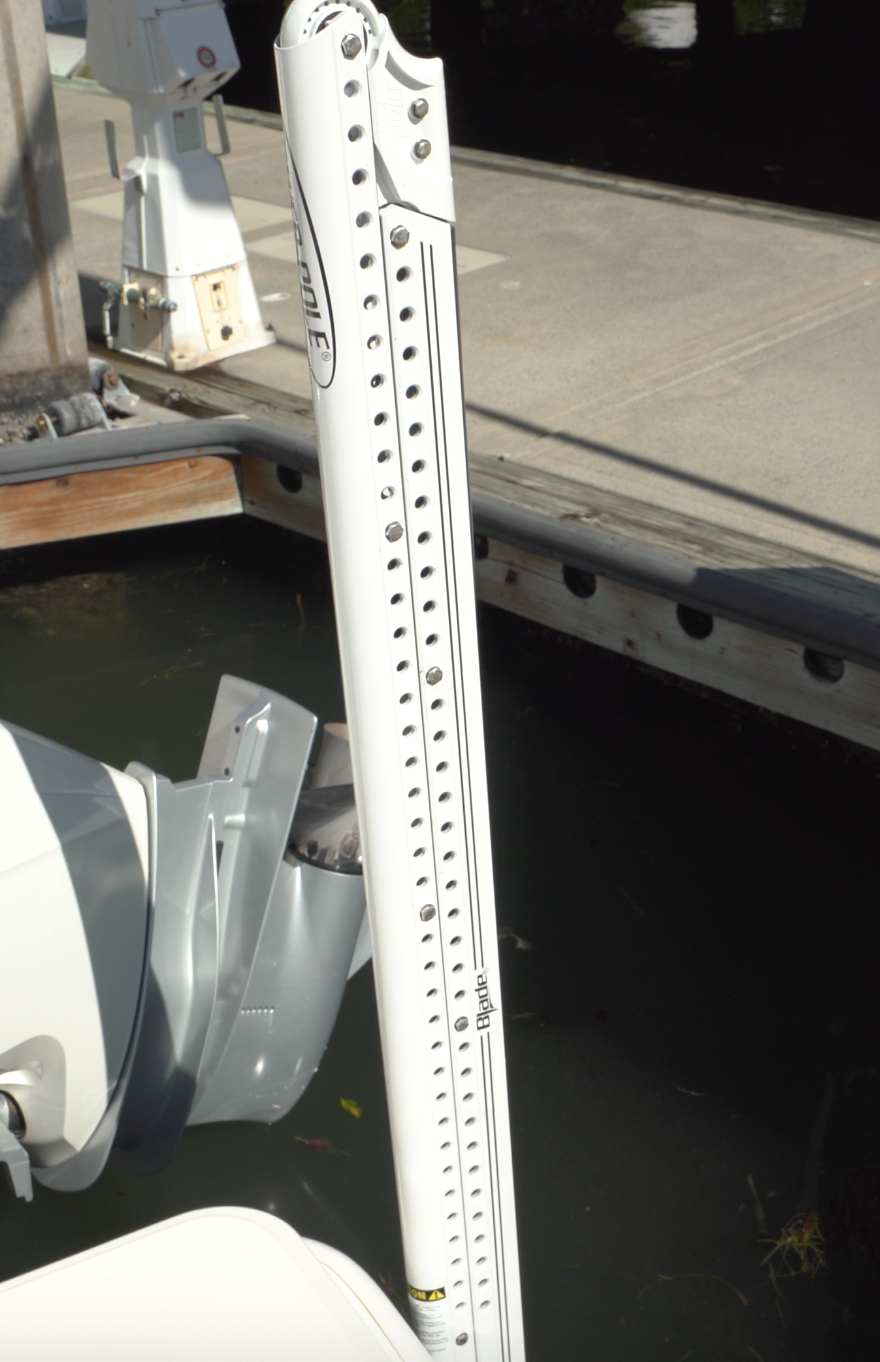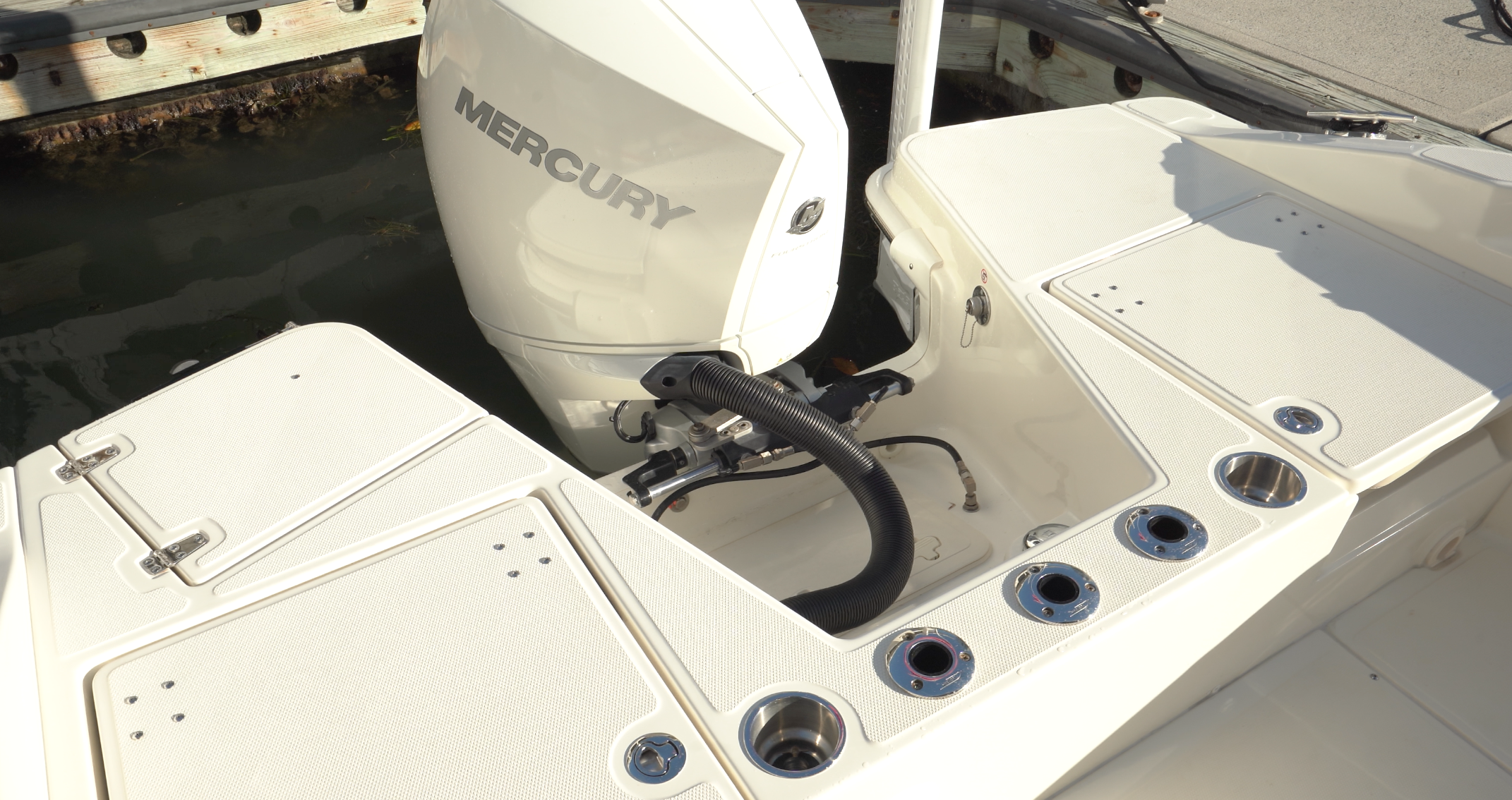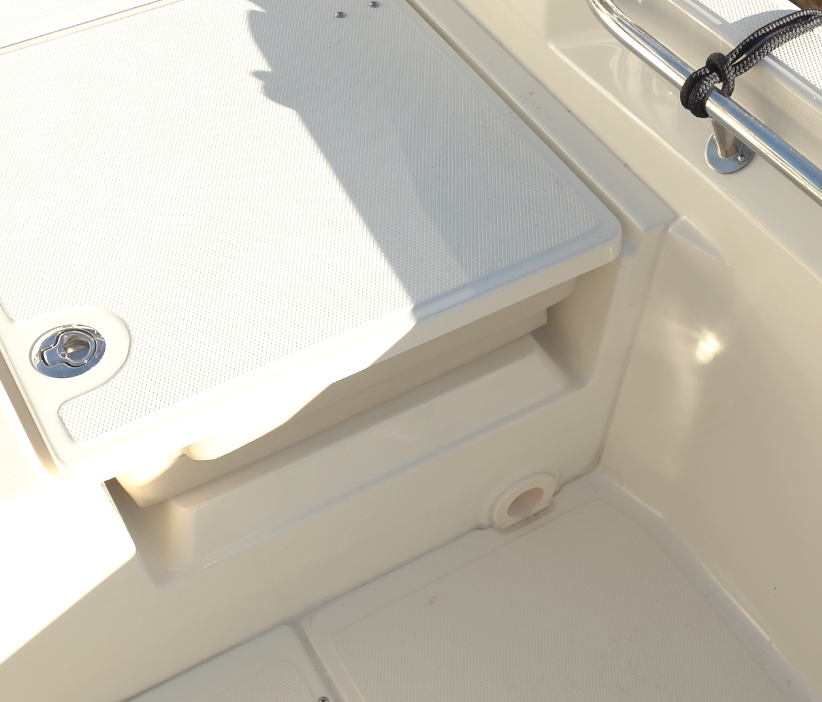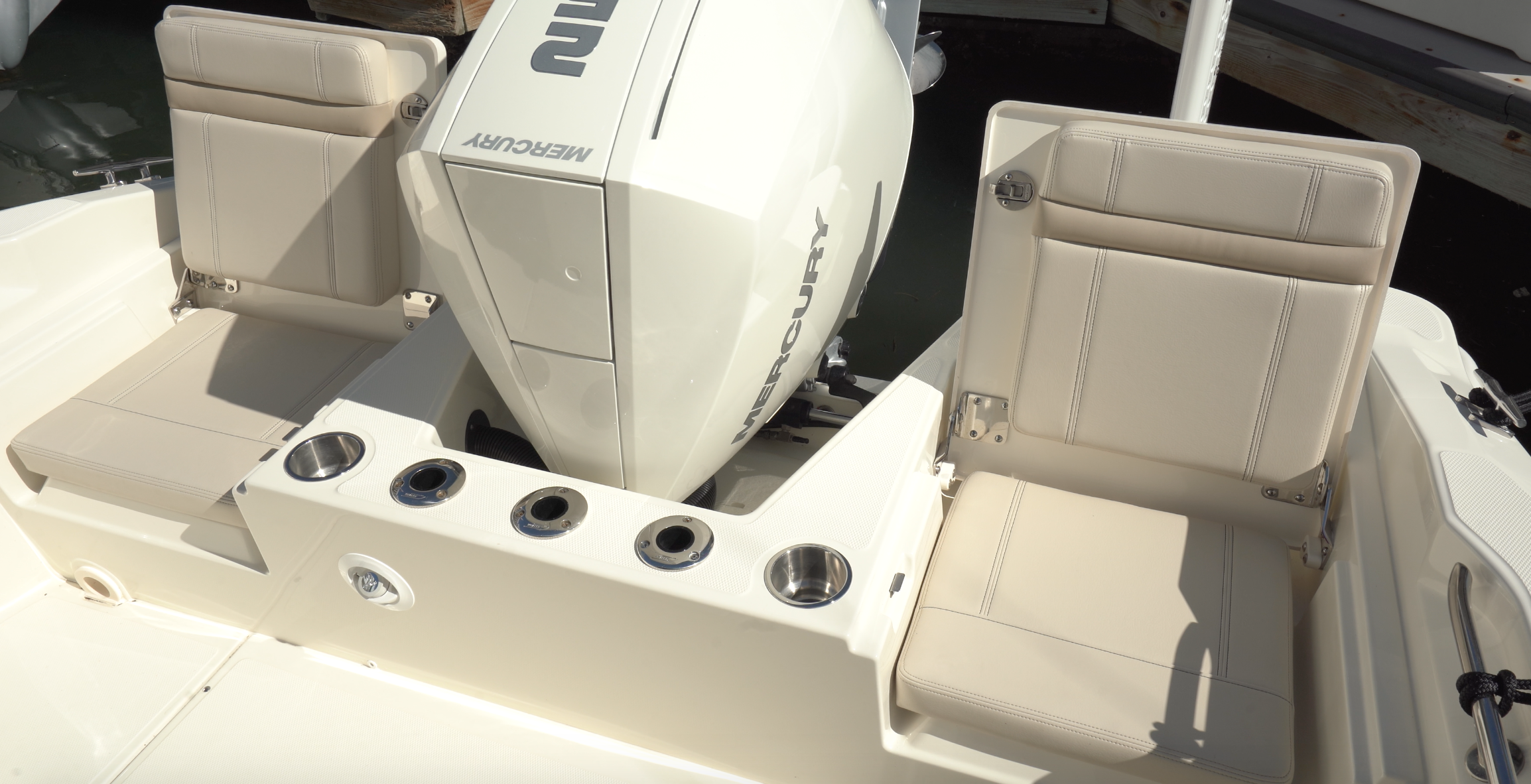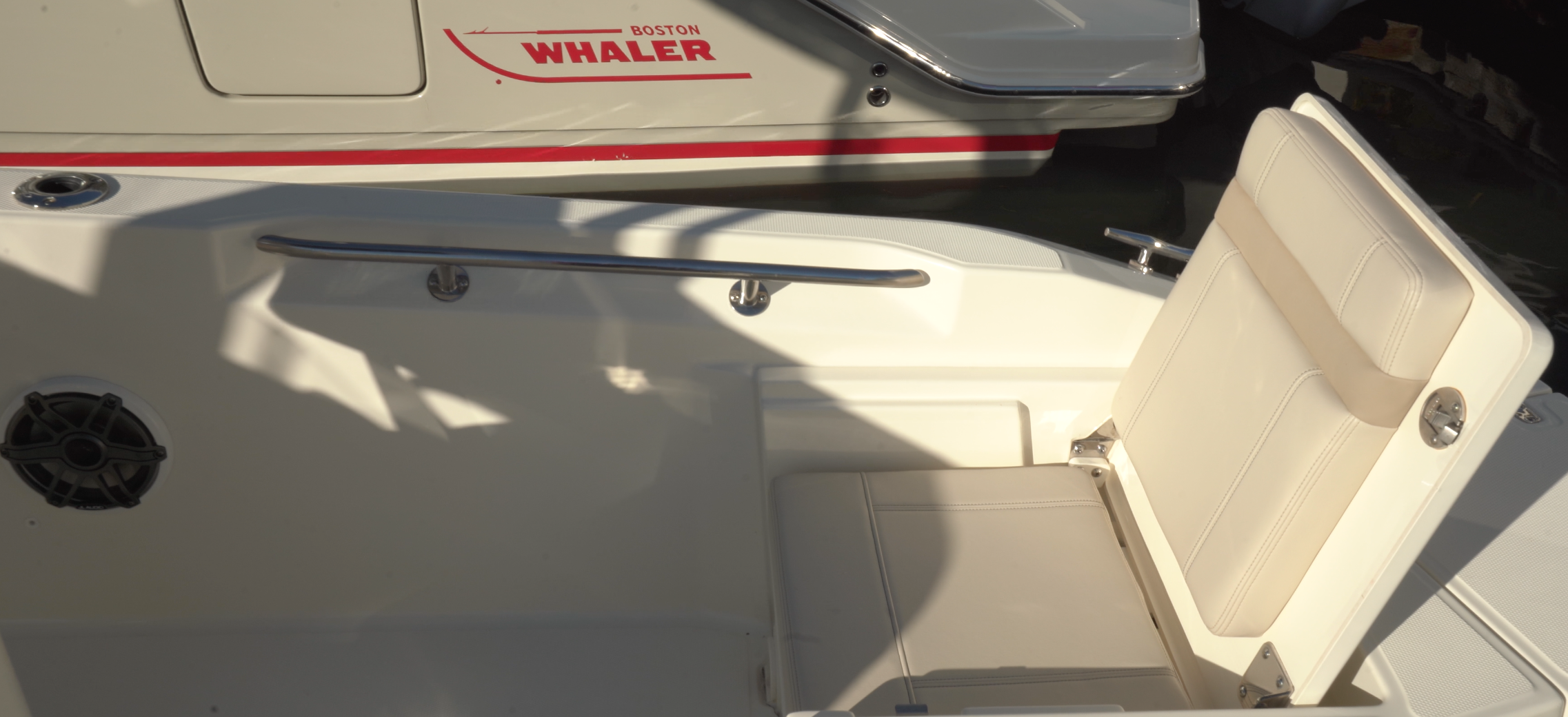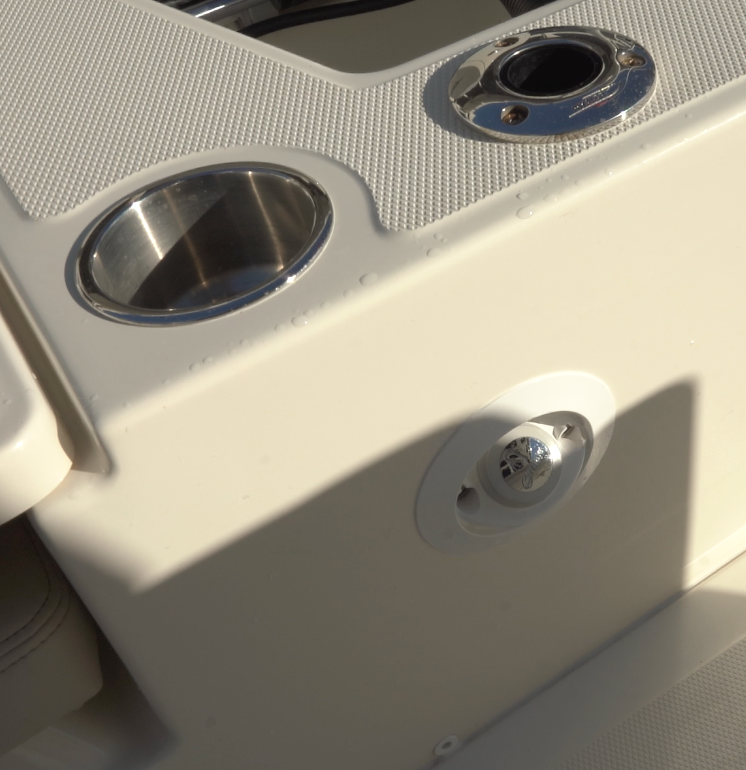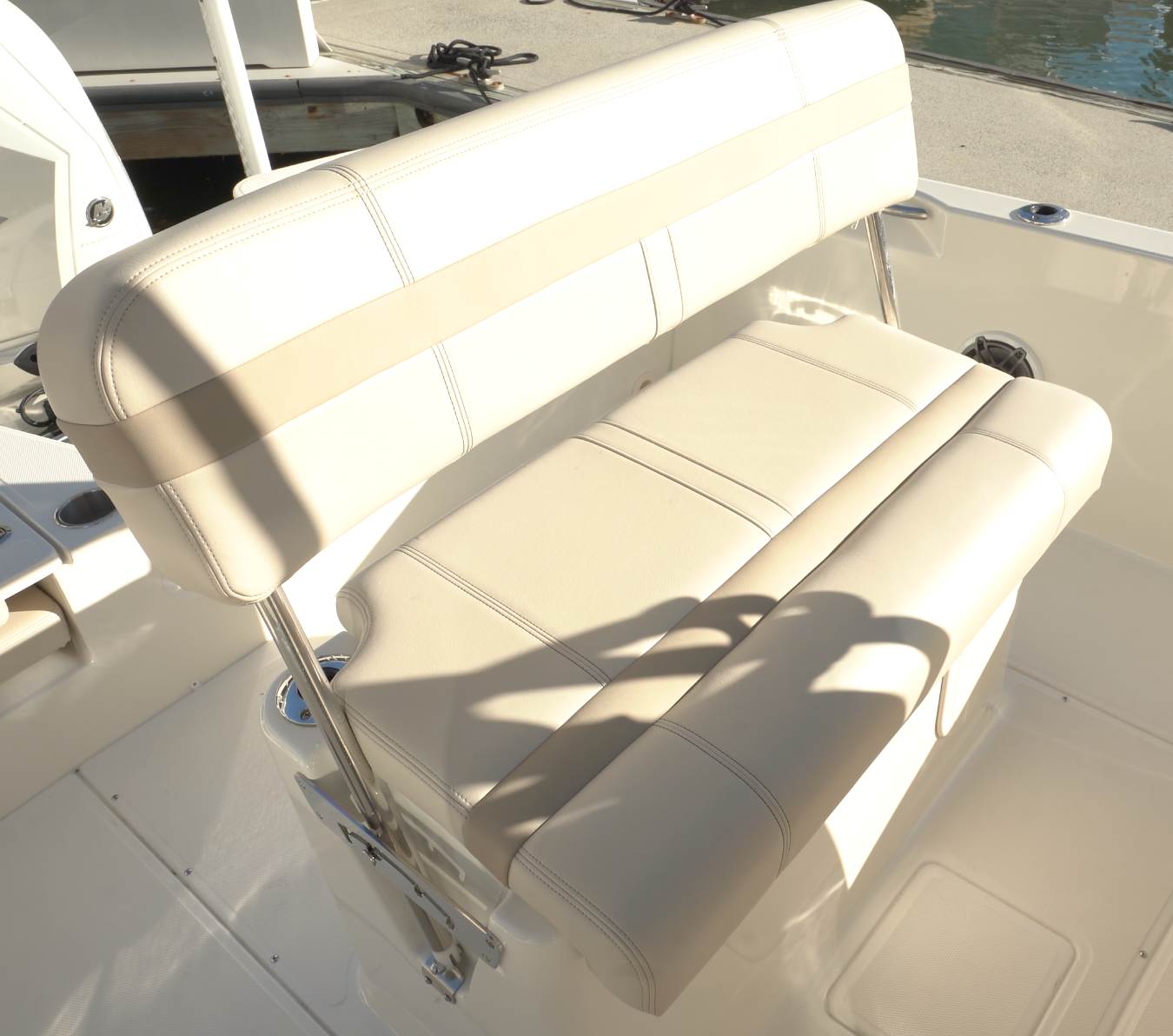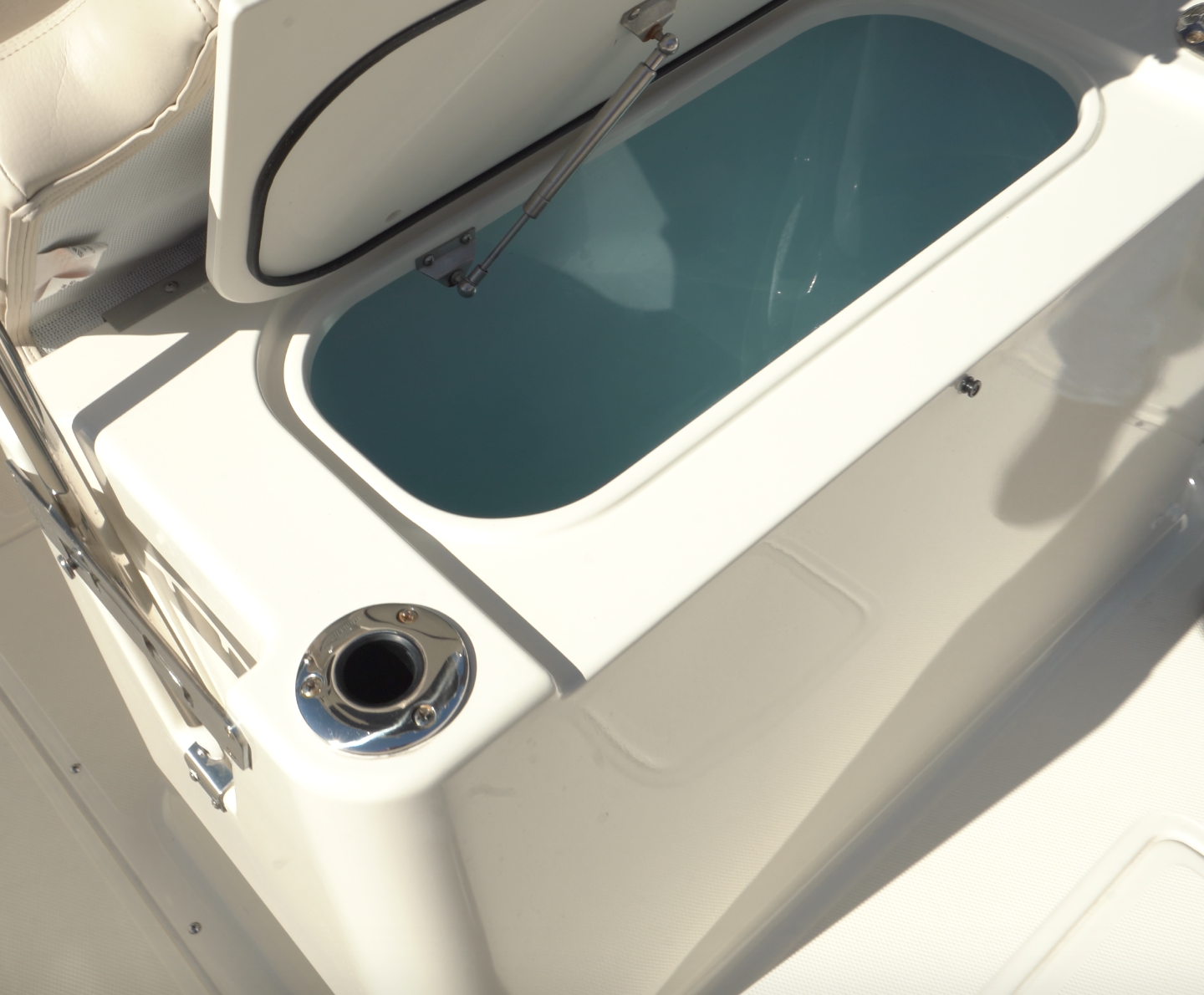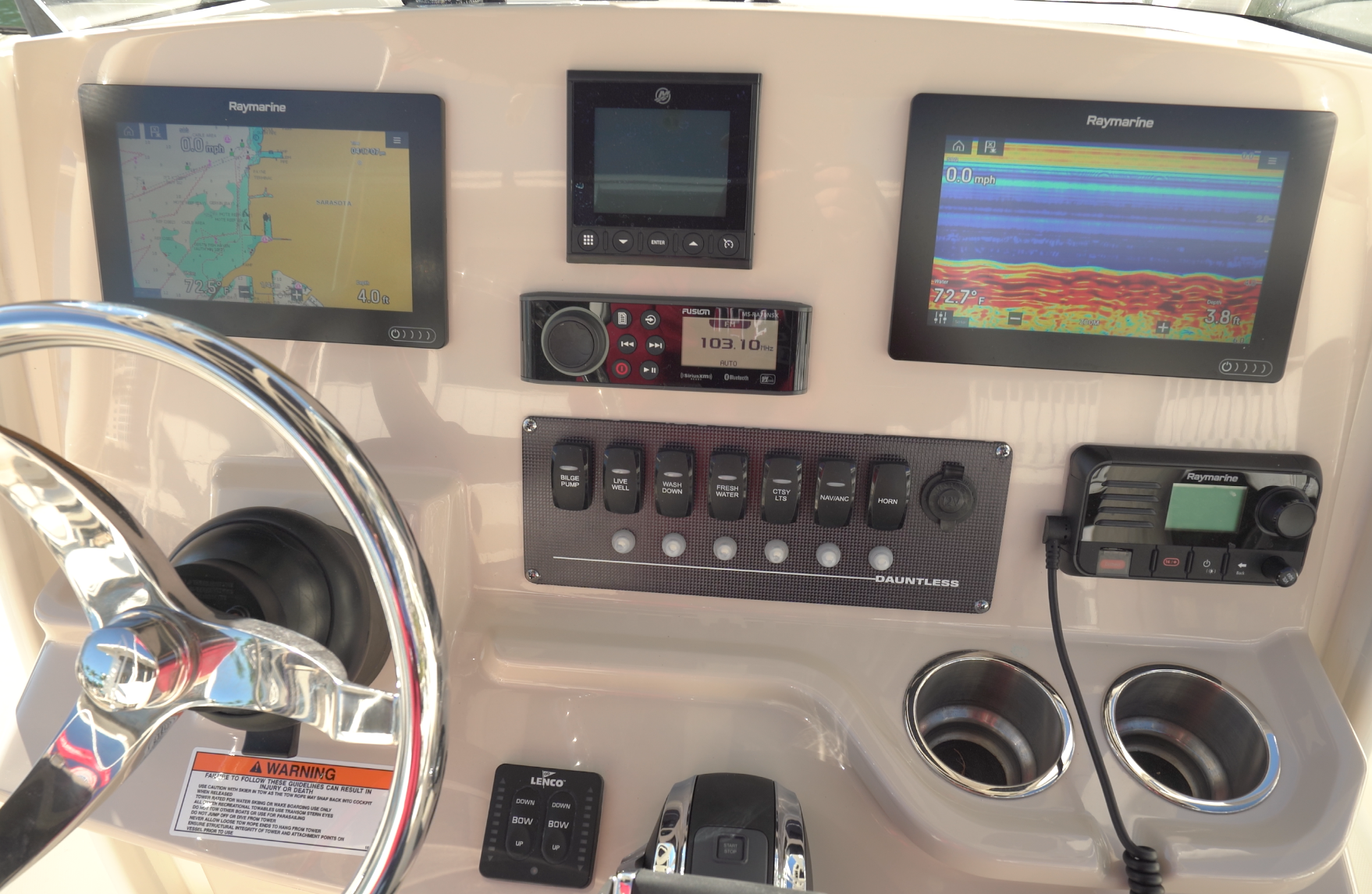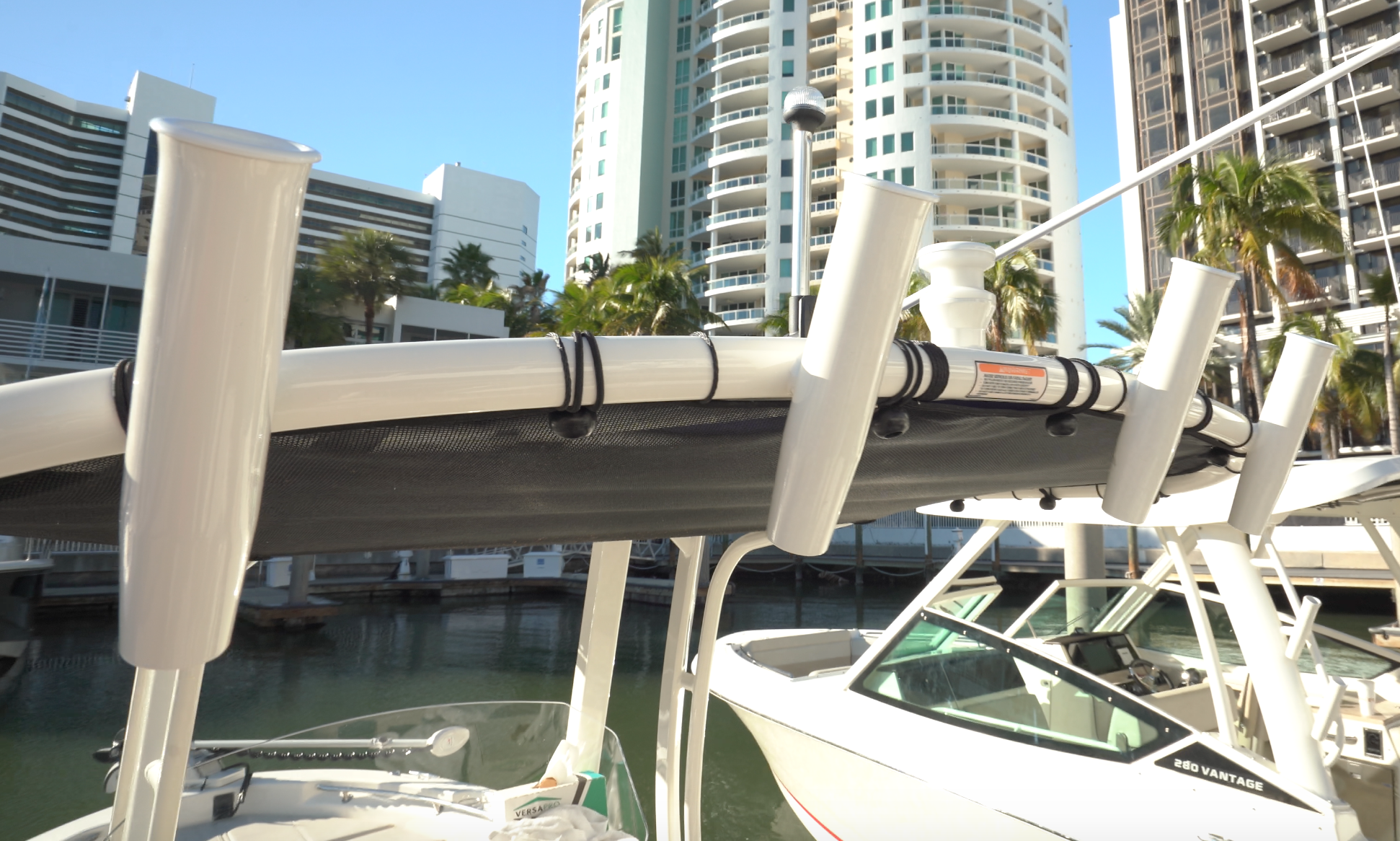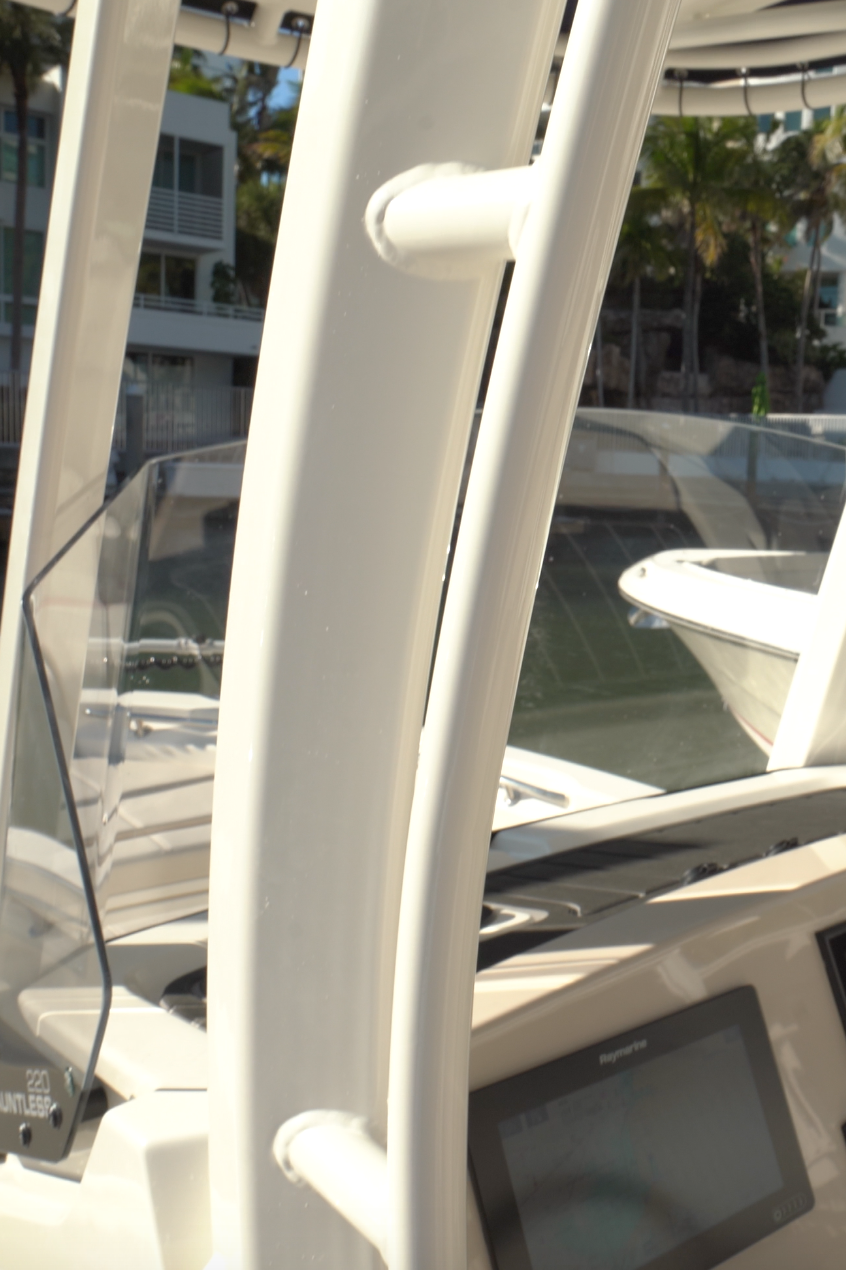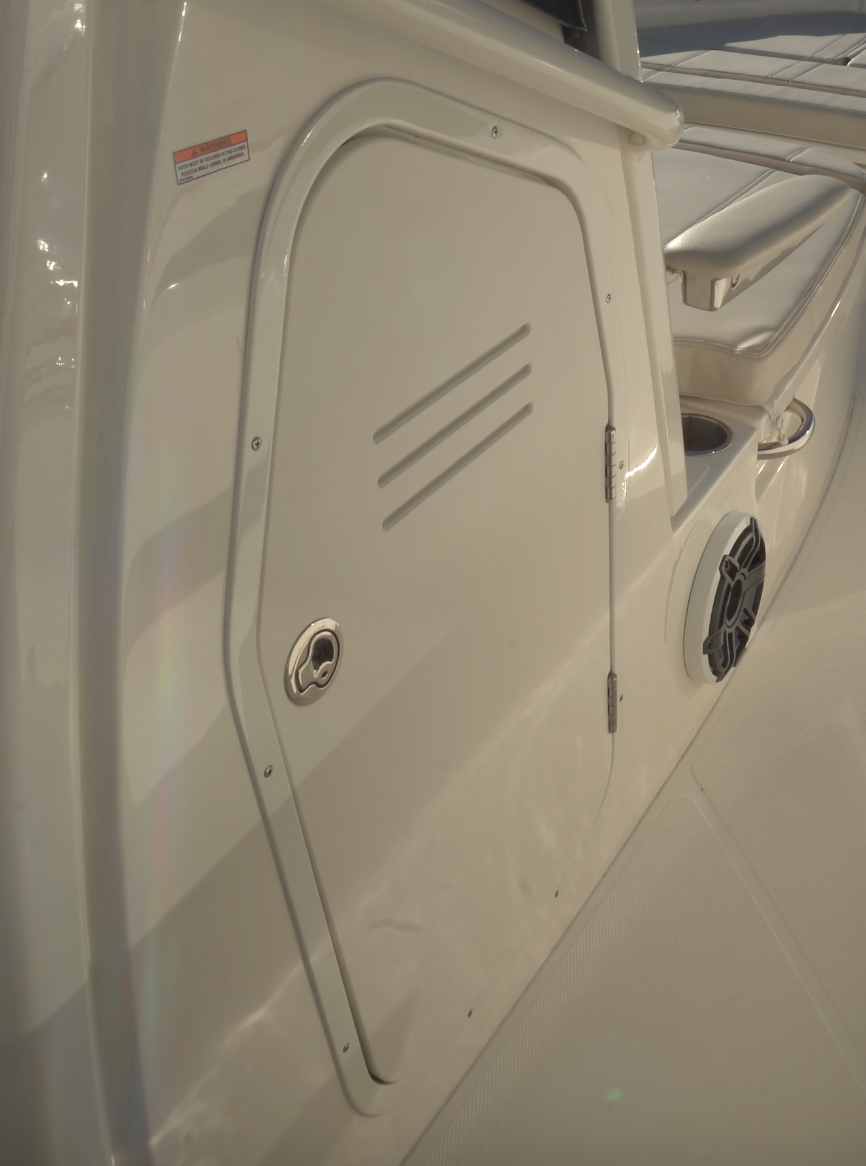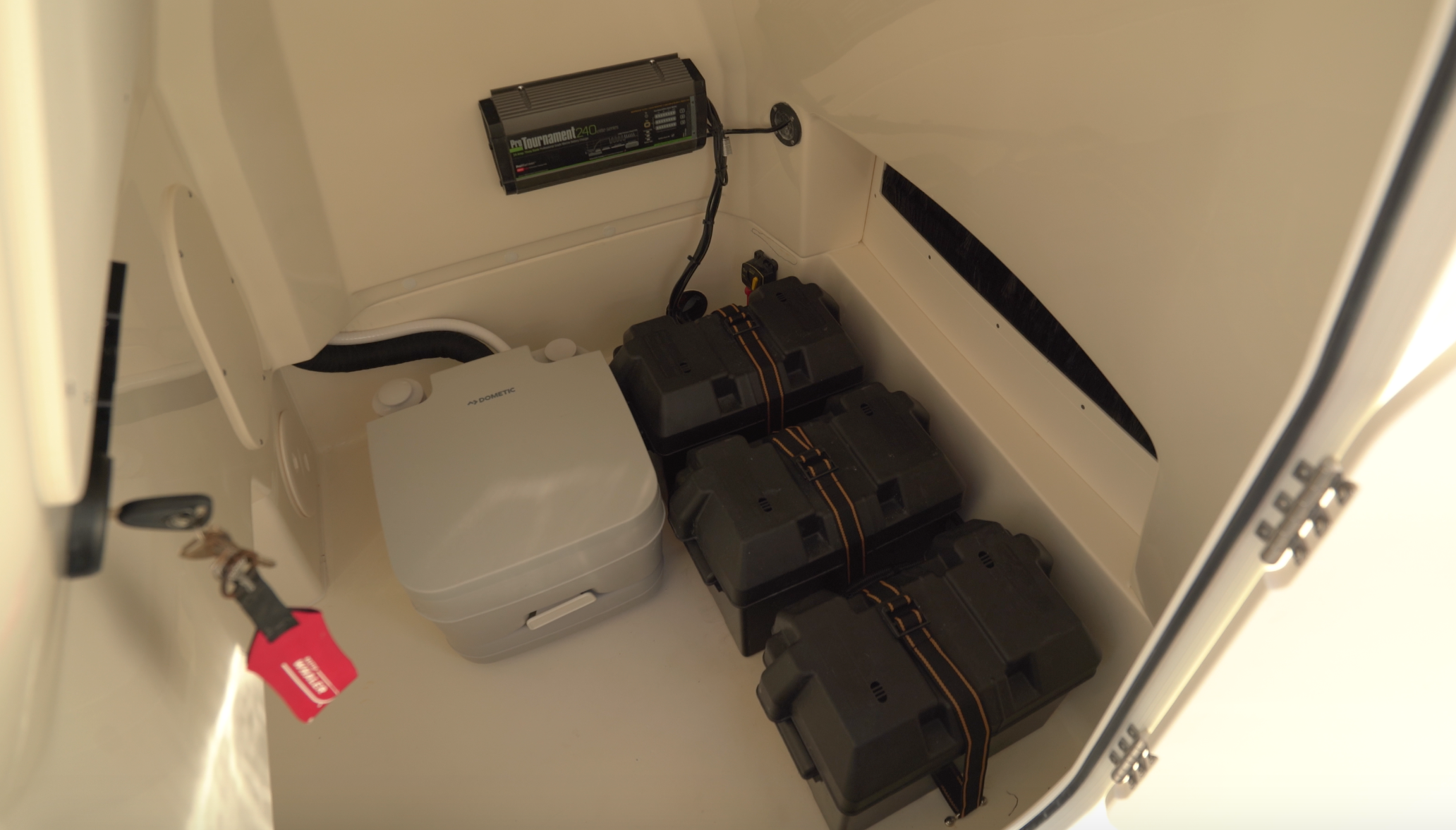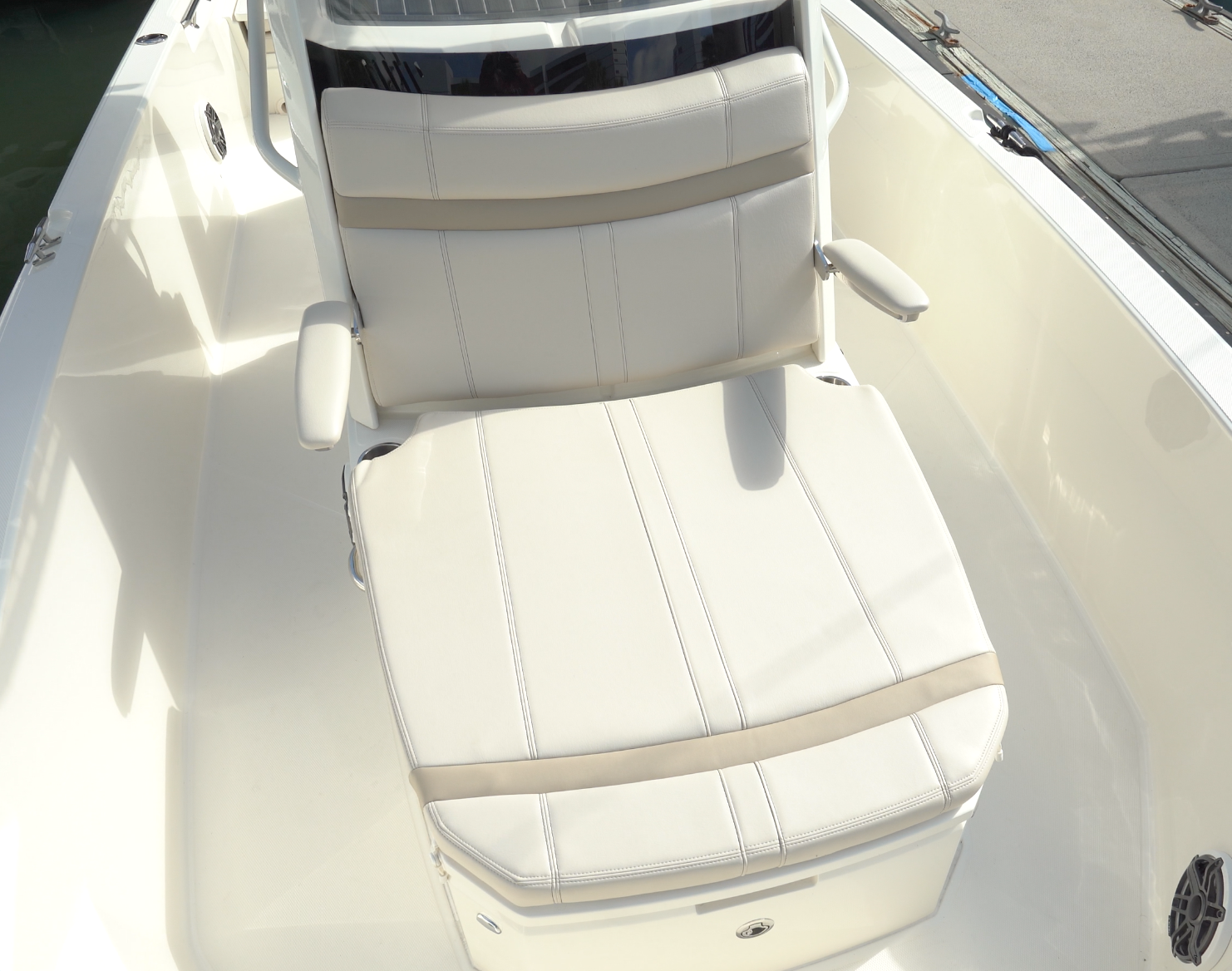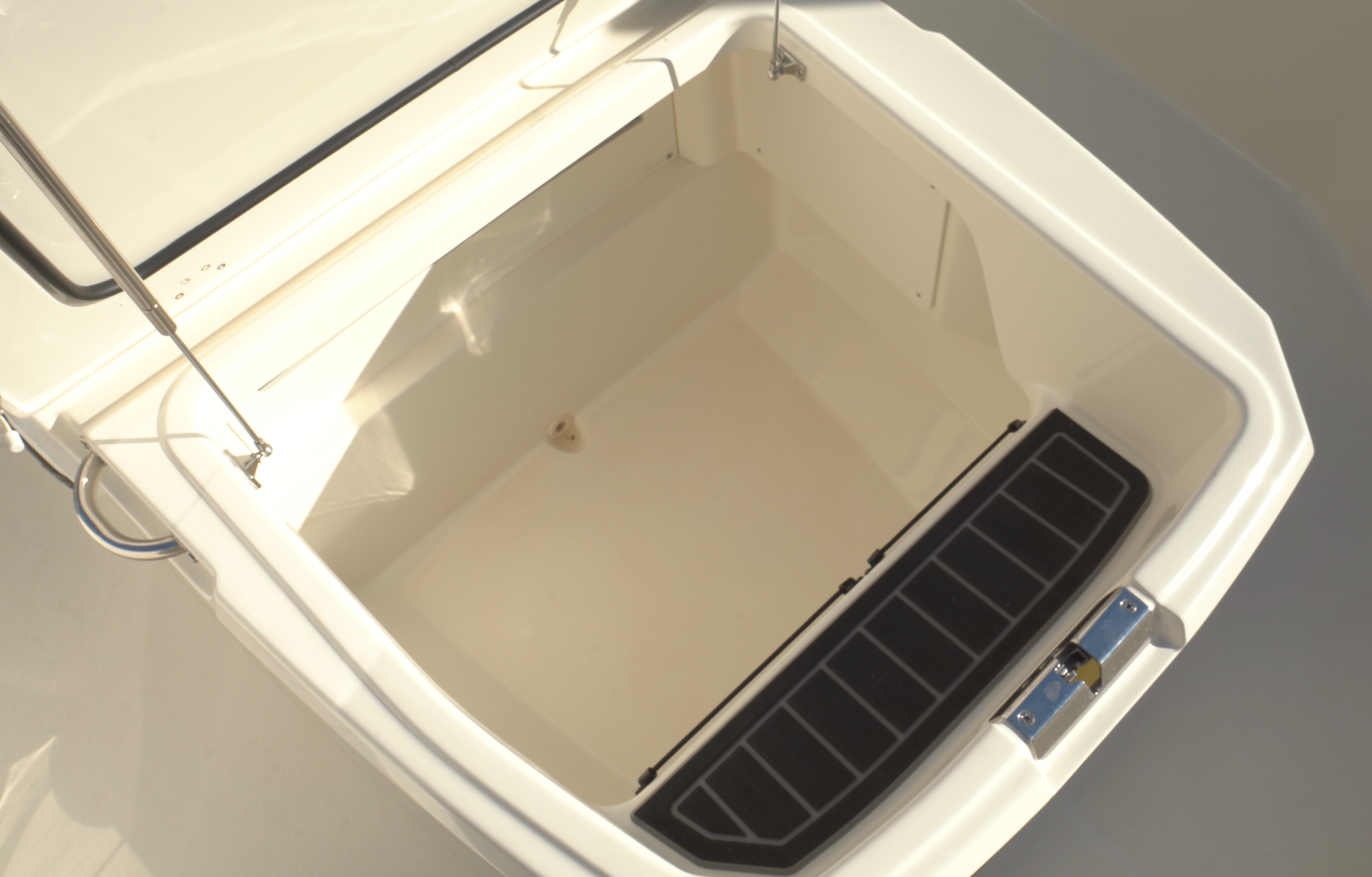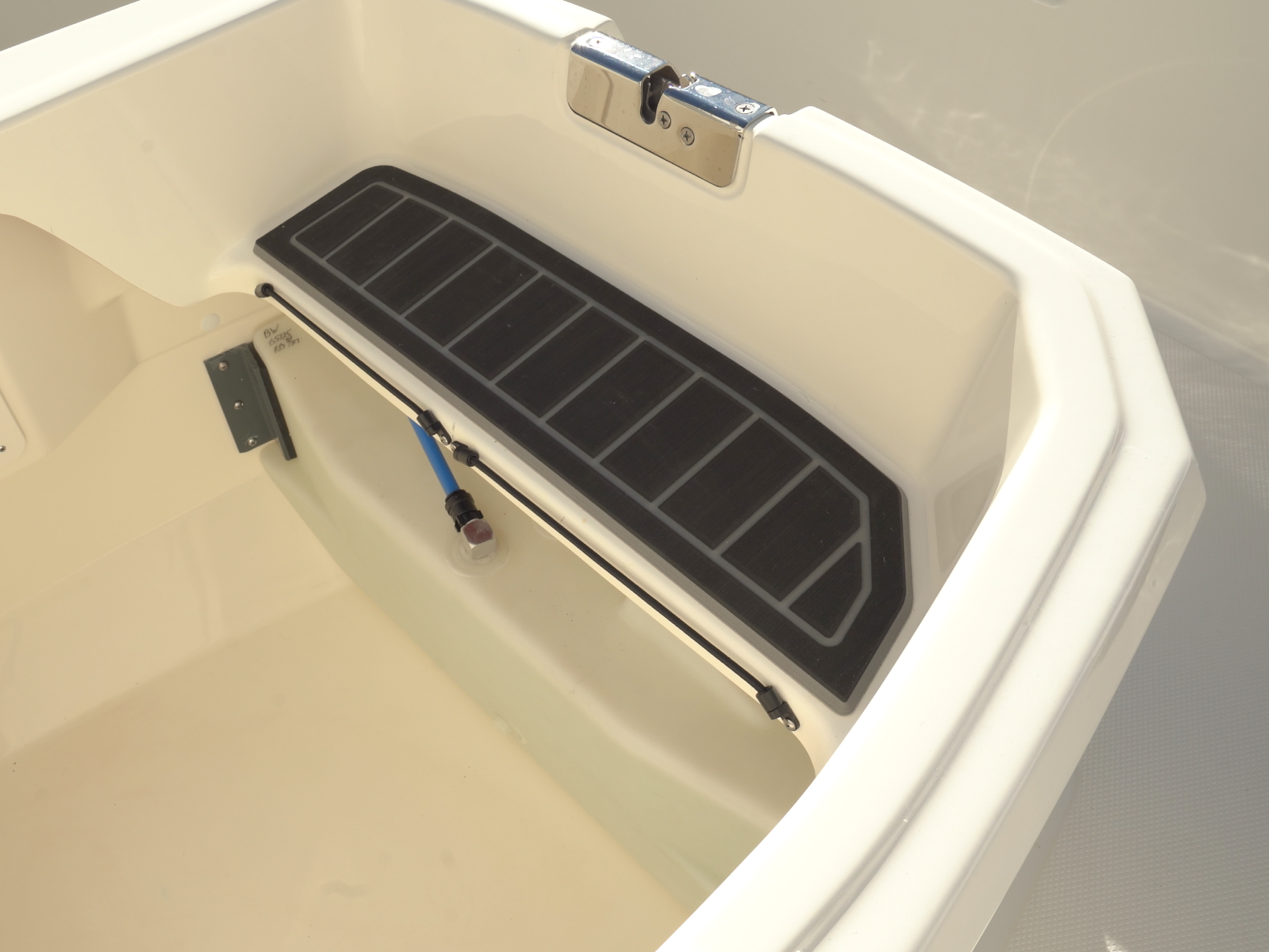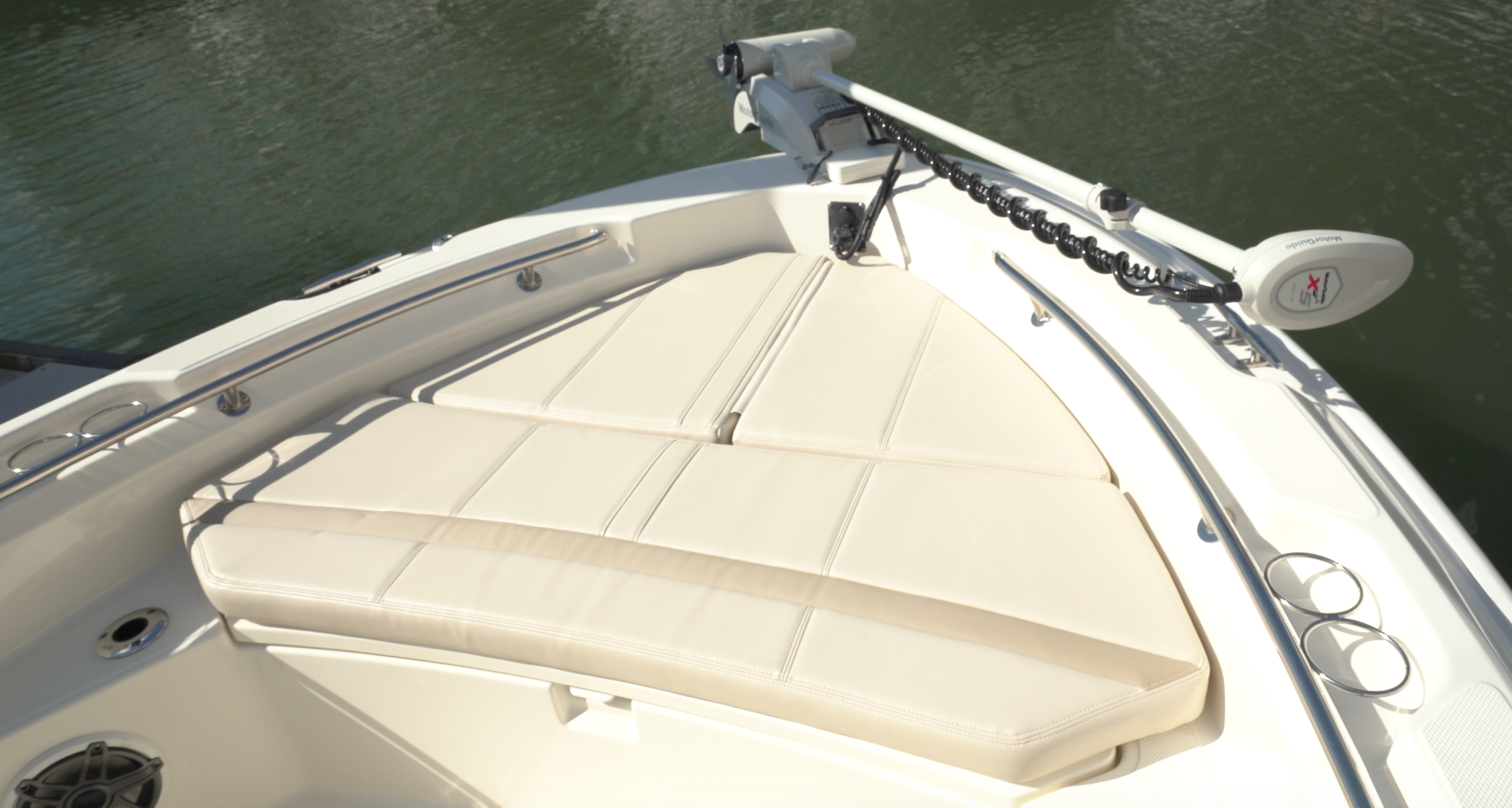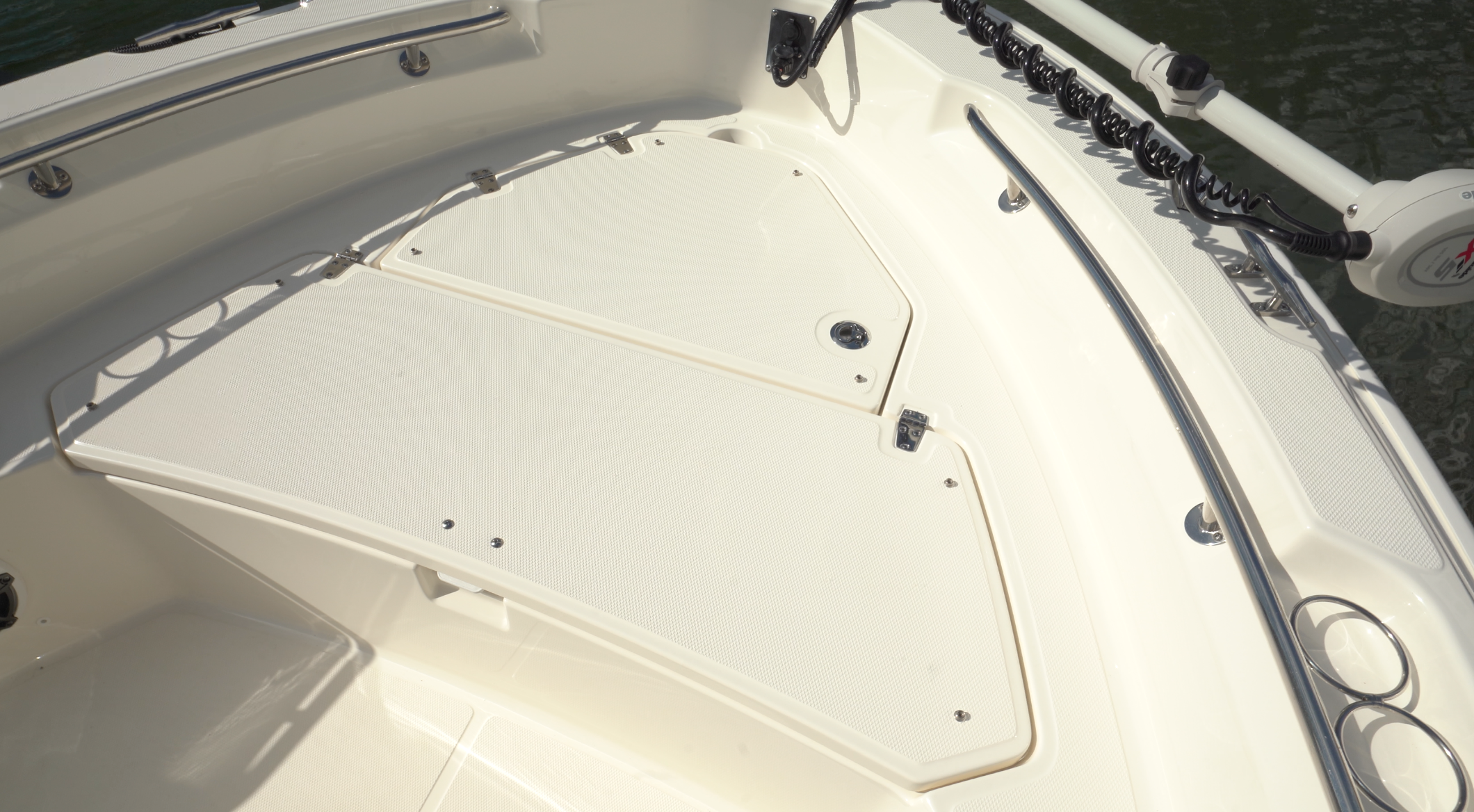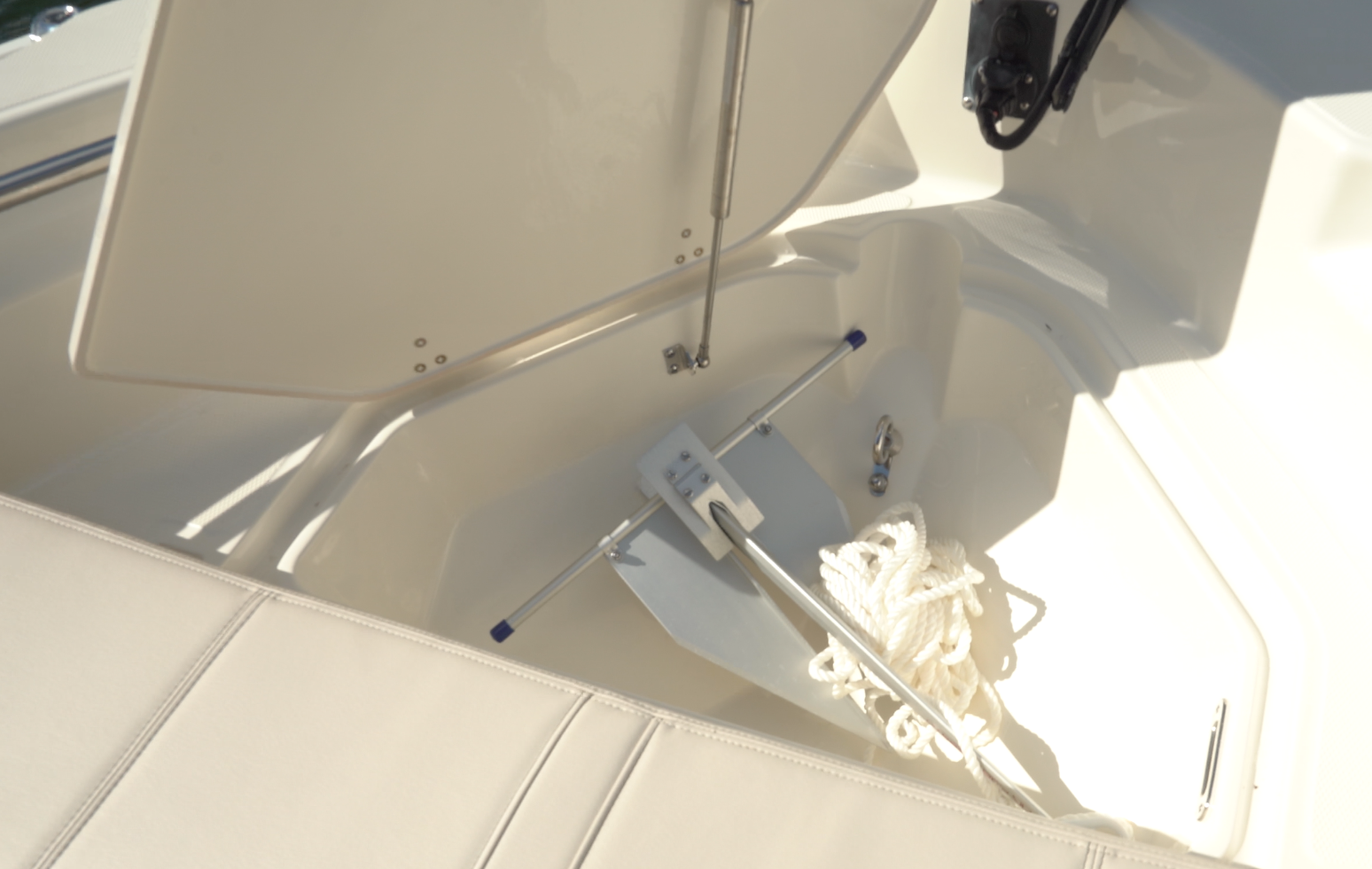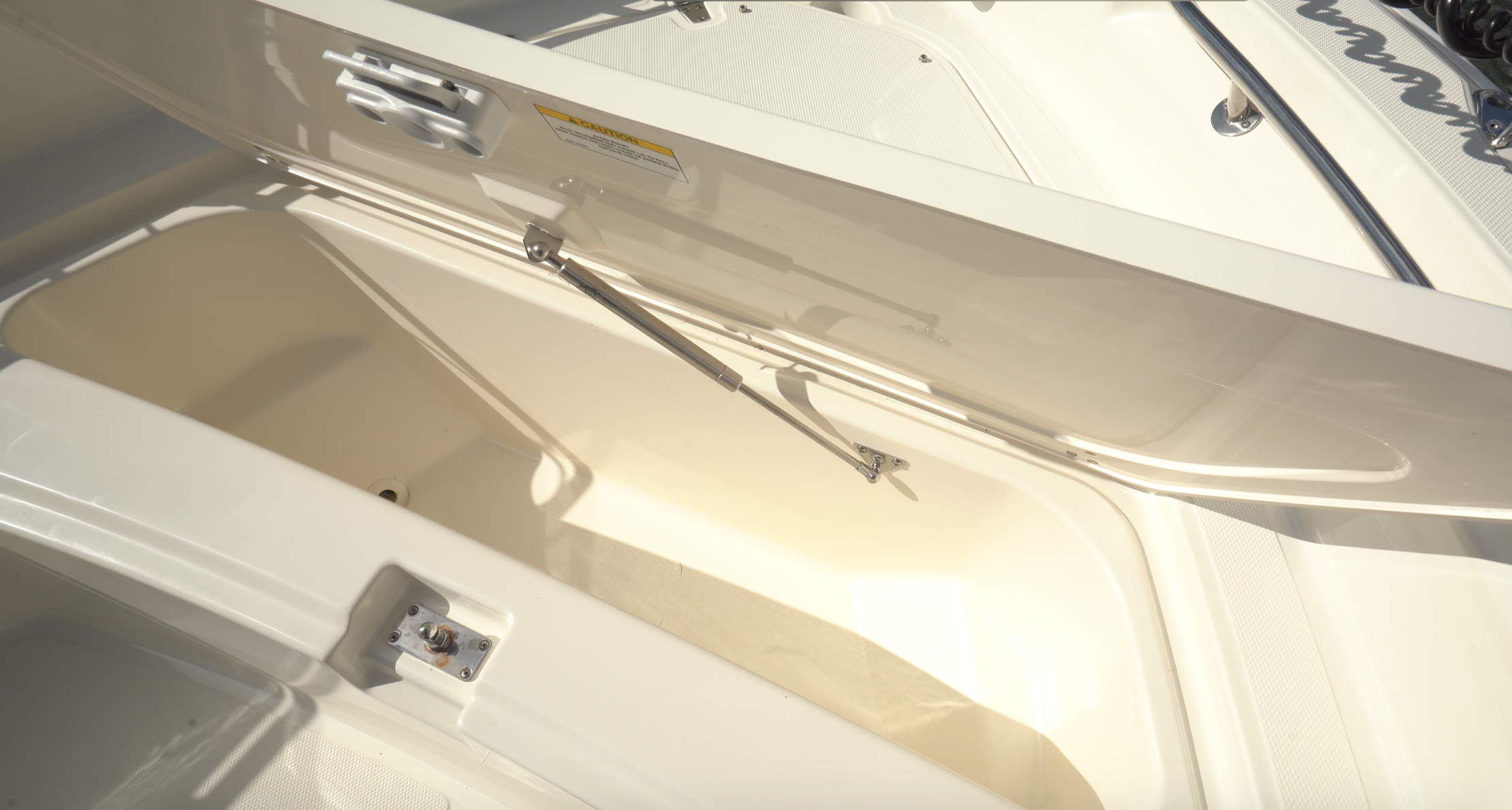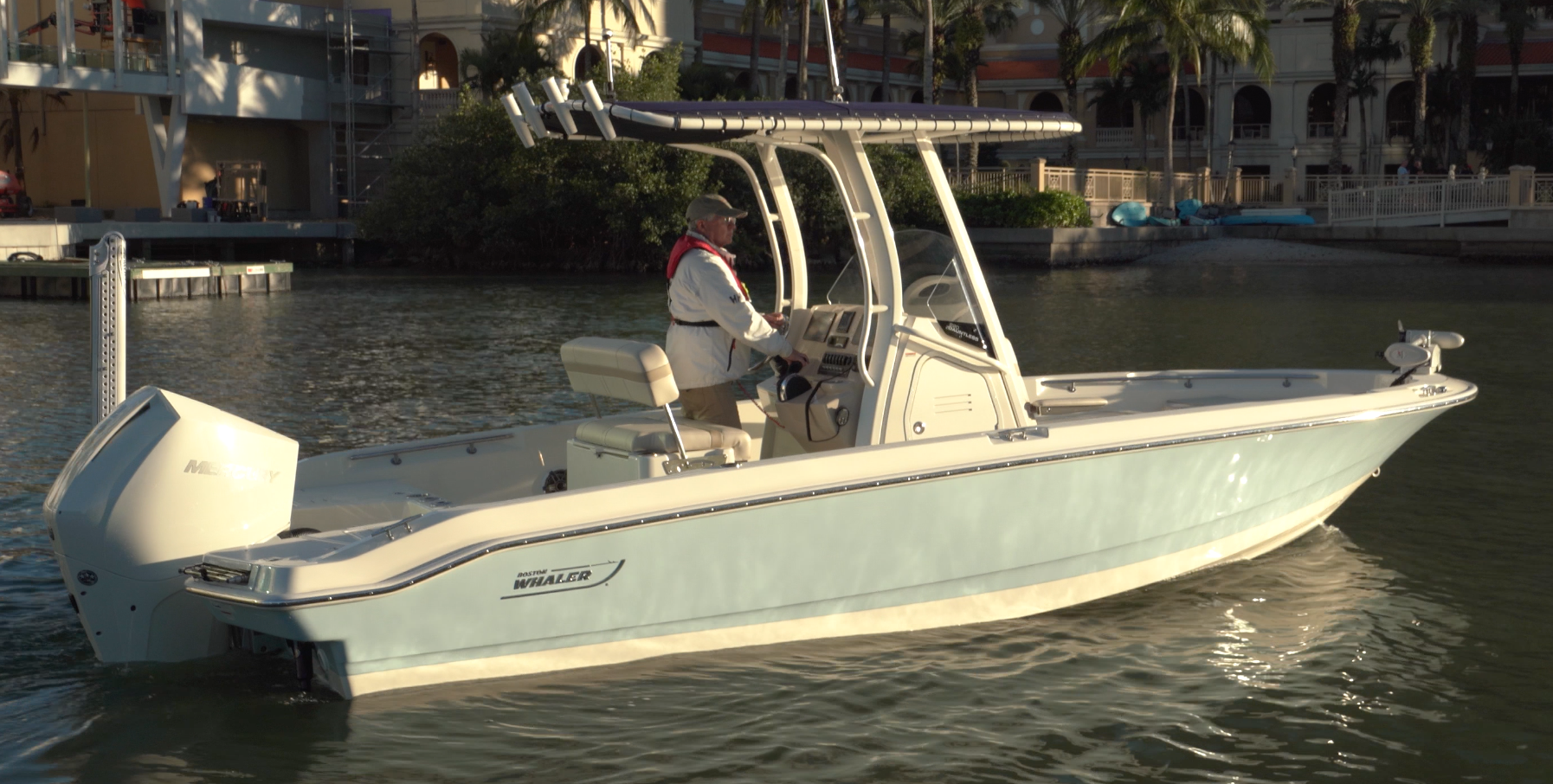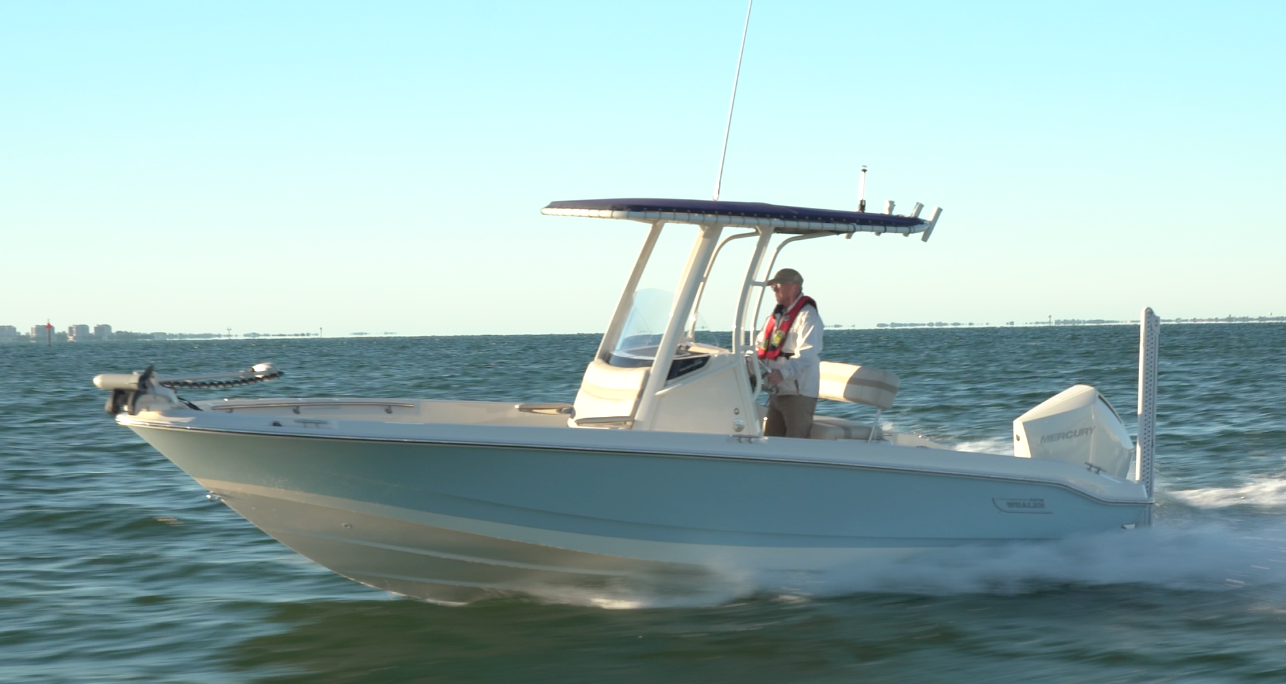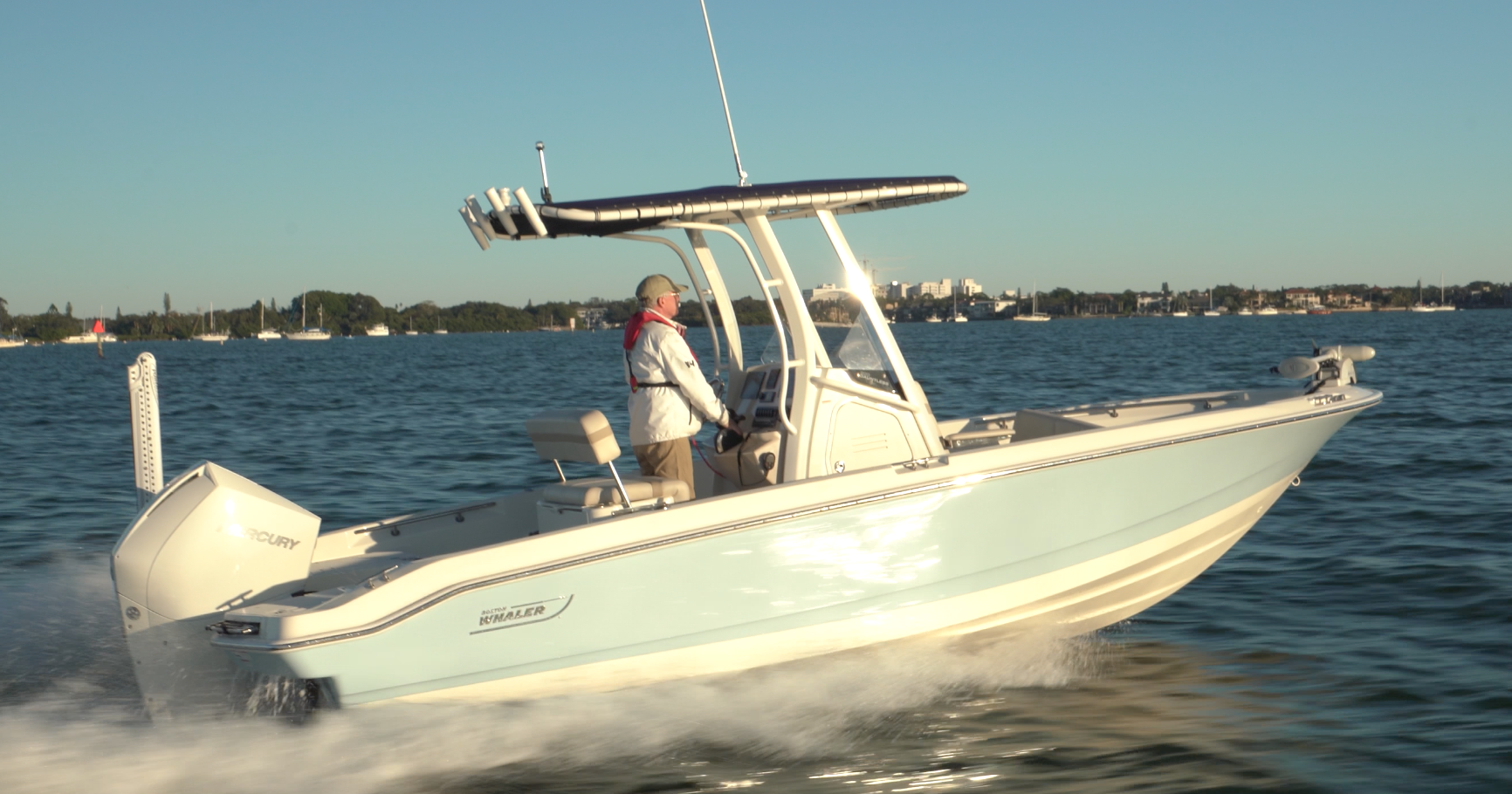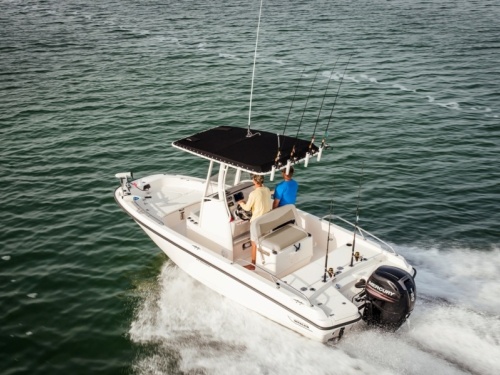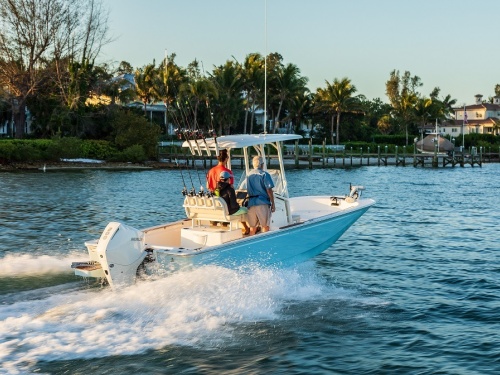Access More Boat Tests
Already have an account? Login
Boston Whaler 220 Dauntless (2021-)
1 x 250-hp Mercury XL V8 CMS
Brief Summary
The Boston Whaler 220 Dauntless is a new model with features that cross over from fishing to watersports to cruising. She’s small enough to be easily trailered and is rated to carry eight passengers.
Test Results
| RPM | MPH | Knots | GPH | MPG | NMPG | STAT. MILE | NM | dBa |
|---|---|---|---|---|---|---|---|---|
| 600 | 2.8 | 2.4 | 0.7 | 3.9 | 3.4 | 283 | 246 | N/A |
| 1000 | 4.6 | 4 | 1.2 | 3.8 | 3.3 | 273 | 237.4 | N/A |
| 1500 | 6.6 | 5.7 | 2 | 3.4 | 2.9 | 244 | 211.9 | N/A |
| 2000 | 8.1 | 7 | 3.2 | 2.5 | 2.2 | 181 | 157.5 | N/A |
| 2500 | 9.9 | 8.6 | 4.4 | 2.2 | 1.9 | 161 | 140.2 | N/A |
| 3000 | 17.8 | 15.5 | 5.4 | 3.3 | 2.9 | 237 | 206.4 | N/A |
| 3500 | 25.7 | 22.3 | 6.9 | 3.8 | 3.3 | 270 | 234.9 | N/A |
| 4000 | 31.3 | 27.2 | 8.7 | 3.6 | 3.1 | 259 | 225.2 | N/A |
| 4500 | 36.8 | 32 | 11.3 | 3.3 | 2.8 | 234 | 203.6 | N/A |
| 5000 | 41.3 | 35.9 | 13.3 | 3.1 | 2.7 | 224 | 194.9 | N/A |
| 5600 | 47 | 40.9 | 18.7 | 2.5 | 2.2 | 181 | 157.4 | N/A |
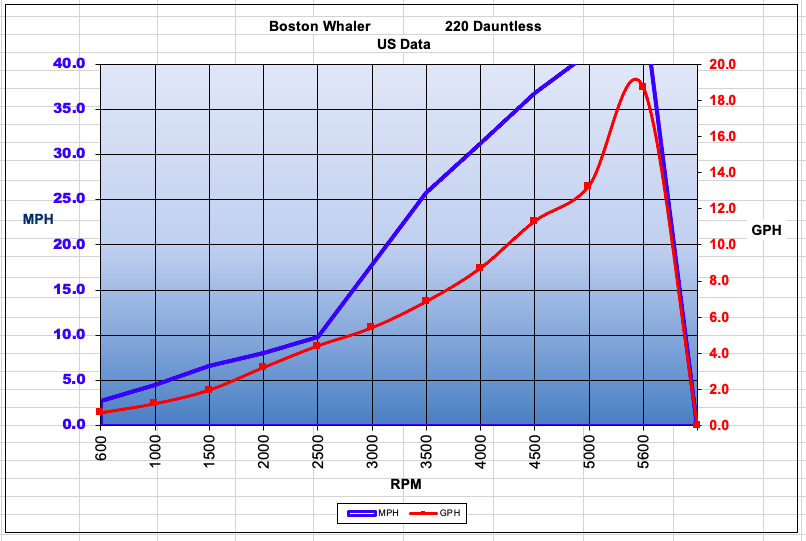
Specifications
| Length Overall |
23'4" 7.11 m |
|---|---|
| Beam |
8'6" 2.59 m |
| Dry Weight |
3,567 lbs. 1,617.96 kg |
| Tested Weight |
4,994 lbs. 2,265.24 kg |
| Draft |
15" 38.1 cm |
| Deadrise/Transom | 18 degrees |
| Person Capacity | 8 |
| Fuel Capacity |
80 gallons 302.83 L |
| Water Capacity |
12 gallons 45.42 L |
| Total Weight |
4,994 lbs. 2,265.24 kg |
Acceleration Times & Conditions
| Time to Plane | 2.2 seconds |
|---|---|
| 0 to 30 | 5.5 seconds |
| Props | Enertia 14.5 x 17 |
| Load | 2 persons; full fuel; 50 lbs. gear |
| Climate | 70 deg.; 45 humid.; winds: 15-18; seas: choppy |
Engine Options
| Tested Engine |
1 x 250-hp Mercury XL V8 CMS |
|---|---|
| Std. Power |
1 x 200-hp Mercury XL V8 CMS |
| Opt. Power |
1 x 250-hp Mercury XL V8 CMS 1 x 225-hp Mercury XL V8 CMS |
Captain's Report
By Eric Colby
Mission Statement
The Dauntless series is one of Boston Whaler’s most popular because the boats are so versatile and capable. The manufacturer makes a point of seeking customer feedback when developing a new model. The 220 Dauntless reflects that with her features designed for flexibility like the folding aft jump seats and bow seating area with removable cushions that easily transform the foredeck for casting.
Boston Whaler 220 Dauntless Major Features
- Folding aft jump seats
- Choice of helm seats
- Large lounge on the console front
- Splashwell contoured to fully tilt the engine out of the water
- Private head in the console
Boston Whaler 220 Dauntless Features Inspection
The Stern. The 220 Dauntless is powered by a single outboard engine and our test boat had a 250-hp Mercury Verado. There are swim platforms that extend past alongside the engine and the four-step boarding ladder is in a locker to starboard. Our test boat was equipped with an optional Power-Pole shallow-water anchor to port.
The Cockpit. The swim platforms transition to the aft casting deck. All walking areas are covered in nonskid and the splash well is contoured for the outboard to fully tilt out of the water. There’s a city water fill to port in the well, plus a hatch to access mechanical equipment like the trim and bilge pumps. The cockpit is self-bailing with large drains in the outboard corners. In the center are three rod holders with beverage holders outboard. Aft on each side are fold-up jump seats that latch closed and have grabrails just ahead. Cockpit depth is 23” (58.42 cm) in this area. A freshwater shower pulls out of the base of the stern.
The Helm. The 220 Dauntless comes standard with a leaning post with a seatback that can be set in four positions for forward or aft-facing. Our test boat had the optional livewell in the base. It comes standard with an insulated cooler in this spot. Forward, the top of the helm console has a padded surface and USB and 12-volt plugs. The vertical dash panel has two 12” (30.48 cm) multifunction displays flanking the Mercury SmartCraft display and a Fusion stereo. Just below are rocker switches and the VHF radio. The stainless-steel tilt steering wheel has a spinner knob. Rocker switches for the Lenco trim tabs have a position indicator in the panel and alongside is the throttle. The view through the tempered glass windshield is clear. Overhead, the canvas T-top is supported by powder-coated framing with built-in grab rails, receptacles for outriggers, four rod holders on the trailing edge and a watersports towpoint in the center.
The Console. A door on the starboard side opens the console and is held open with tension hinges. It’s also vented so fresh air can circulate. Inside are the house, start and trolling batteries plus the charger as well as a portable head with pumpout. The passageways between the console and the inwales are 17” wide (43.18 cm) on each side. Amidships deck height is 24” (60.96 cm). On the front of the console is a double-wide lounge with folding armrests. There’s self-draining storage in the base and if the optional water tank that was on our test boat isn’t installed, there’s space to store rods up to 7’ (2.13 m) long. Two stainless-steel struts hold up the hatch that’s finished on the underside and closes on a thick rubber gasket.
The Bow. Continuing forward, the bow can be set up for cruising with 6” (15.24 cm) coaming pads and a lounge pad that measures 43” (109.22 cm) fore to aft and 62” (157.48 cm) at its widest point aft. The cushions can be removed to create a casting area that’s 14” (35.56 cm) off the main deck. In the aft corners are stereo speakers and flush-mounted rod holders. Rails are recessed and there are 6 cleats in the usual location around the boat, but we’d like to see pull-up versions instead of the standard ones that stick up and could snag a fishing line. There are two hatches in the deck. The forward one is an anchor locker with a notch in the deck to accommodate the rode and the compartment self-drains. The hatch is finished on both sides and held open with a gas strut. The aft locker is insulated and has a drain. Fully forward, we saw the optional MotorGuide X5 trolling motor.
Boston Whaler 220 Dauntless Performance
The Specifications. The 220 Dauntless has an overall length of 23’4” (7.11 m), a beam of 8’6” (2.59 m) and a draft of 15” (38.10 cm). With an empty weight of 3,567 lbs. (1,618 kg), full fuel and two people on board, we had an estimated weight of 4,994 lbs. (2,265 kg.)
The Numbers. Test power was a single 250-hp Mercury XL V8 four-stroke outboard turning a 14.5” x 17” (36.83 cm x 43.18 cm) Enertia three-blade stainless-steel propeller through a 1.75:1 reduction. Winding the engine up to 5600 rpm, we hit a top speed of 47.0 mph. Best cruise came at 25.7 mph and 3500 rpm. Our test boat’s 6.9-gph fuel burn translated to 3.8 mpg and a range of 270 statute miles with 10 percent of the boat’s 80-gallon (302.83-L) fuel capacity held in reserve. In acceleration tests, the 220 Dauntless planed in 2.2 seconds and dashed to 20 mph in 3.7 seconds and 30 in 5.5.
Handling. In a word, the 220 Dauntless is silky smooth even in light chop. When crossing wakes at slow speed, she didn’t plunge through, but simply parted the waves throwing spray low and wide. Maneuvers were predictable and with the engine trimmed out at cruising levels, the prop will break loose in a hard turn. Trim in the engine and the propeller will hold its bite. We counted 3 ½ turns from lock to lock.
Observations
The quality for which Boston Whaler is known is evident throughout the 220 Dauntless. The company paid attention to the ergonomics and equipped her with just the right amount of features. She easily transitions from a day on the water with the family to a day off the coast to chase fish.
Her size also keeps her attractive to a family because a large vehicle isn’t required to tow the 220 Dauntless. As slips become more expensive, trailer boating is becoming the primary way that many people head out on the water.

